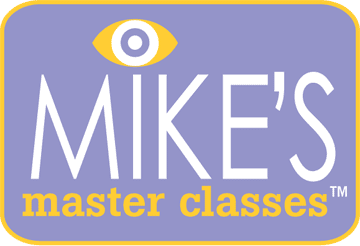I’ve been a fan of John Stowell’s works since I first encountered his guitar lessons in Guitar Player years ago. Later on, as a student in Berklee, I was very excited when I finally met him in person. His very personal playing style including his posture (how he held the guitar to allow him to have a wider fretting hand reach), choice of voicings and colors were both very attractive and challenging for me. I always enjoyed taking private lessons with him anytime we were in the same city. Now, via this new masterclass, everyone has an opportunity to learn his specific voicings and sound as applied to his own original compositions.
John explains that the purpose for this class is to introduce the voicings and sounds so that we can incorporate them in our playing. It’s not necessarily to learn the tunes (although that’s nice too!) John also shares the benefits of using hybrid picking for his style of playing.
In the first tune, Always Sometimes – John uses a combination of double stops, voicings utilizing open strings, contrary motion and voicings with intervals of 2nds in the middle voices to create a very colorful and unique harmonic environment. Along with the notated PDF (with both standard notation and TAB), I started to gain a sense of John’s approach.
After going through several repetitions of this piece, John’s harmonic and textural vocabulary (partly inspired by his friendship with Jimmy Wyble) started getting into my playing. Some voicing seem easier to incorporate and others began to appears as contrapuntal textures to embellish my II-V-I ideas.
In the second piece, Springfield Sonata – John introduces various harmonic minor voicings including Lydian#9 sounds. This piece I feel is more complex than Always Sometimes and has a lot of interesting voicings and ideas. Personally, I can see myself working on very small sections of the piece probably examining one mode or phrase at a time.
The third piece, Shiffletting is particularly personal for me as it is dedicated to one of my former jazz instructors John Shifflett who I studied with at San Jose State University. The chord for this piece include a great combination of voicings with open strings and fretted notes, low register voicings, open voiced triads as well as larger intervallic structures. I would consider this piece to be technically demanding in terms of some of the stretches as well as the hybrid picking technique needed to perform the piece musically. For those not used to balancing open string and fretted note volume, this piece will be a workout. Definitely a lot of ideas to be harvested here!
All in all, this is really an advanced master class for the seriously dedicated jazz guitarist. If you’re ready to get out from standard drop-2, drop-3 and other common jazz chord voicings, this is for you. Any of the pieces here are bound to inspire and challenge your fingers, ears and musical imagination. For those who invest in this class I’m sure you will get hours of harmonic workouts to help level up your playing. See John Stowell’s Class on Exploring Original Compositions, pt 2 Here
Pros: Nothing quite like this anywhere especially for guitar. John’s harmonic language is deep and inspiring.
Cons: Some assembly required. For most mortals, you will probably need a lot of patience and time to internalize these ideas for musical application.
TLDR: Want to have a modern jazz harmonic vocabulary? Prefer counterpoint and clusters to block chords and octaves? Get this now and expand your harmonic horizons!



0 responses on "Video Review: John Stowell - Exploring Original Compositions, pt 2"